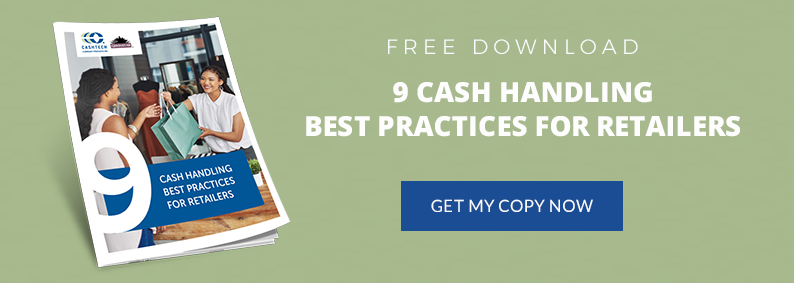The typical margins for today’s convenience store are both tough to earn and nominal in a highly competitive environment. Operators must be extra diligent when managing every bank note and every coin that enters their registers in order to protect their profits.
Cash handling mistakes might be common and they might be made innocently, but they can be very costly. And they could put you at risk of robbery. Others can be made purposefully as an attempt at theft. Regardless, preventing cash losses by avoiding cash handling mistakes is critical to protecting your bottom line.
Here are some of the most common and costly cash handling mistakes to avoid at your convenience store.
1. Poor Cash Deposit Processes
As a convenience store owner, you’re busy dealing with staffing issues and preparing for industry challenges. You’re preoccupied with inventory and customer service. And making cash deposits might simply become part of your routine. But these cash deposits must be made with focus and awareness in order to reduce risks and losses.
You must follow a consistent process—follow procedures and policies. You must also get organized. It’s far more likely that you’ll make mistakes when you’re rushed or frazzled. You might forget to lock the door behind you in the cash room. You could make errors while counting or sorting. You might not minimize distractions and stay aware of your surroundings when you’re handling large amount of cash. When it comes to cash deposits, you have to remain alert and proceed with caution. Safety is top priority.
2. Too Much Cash in the Register
Your convenience store might generate a lot of cash as people prefer to pay with cash for small transactions. As such, it’s critical that you remove cash from the registers on a regular basis so you don’t have overflowing registers.
One of the best things you can do is to implement a smart safe under the counter. This way, your employees can drop bills whenever they need to and ensure that they have limited cash in their registers at all times.
3. Counting Cash in Plain View
When your employees need to count their floats at the start of their shifts or reconcile profits at the end of the night, they might count their cash in plain view at the cash register. But counting and sorting cash should never be done in areas visible to patrons. You should have a separate cash room for these cash handling activities to keep your cash secure.
Better yet, invest in currency recyclers that will do all of the counting, sorting, balancing, and reconciling automatically, so your employees do not need to handle your money manually—anywhere.
4. Detecting Counterfeit Manually
The convenience store is a prime location for counterfeit. Robbers can be in and out quickly, exchanging their counterfeit funds for merchandise or change. Your employees must be properly trained in counterfeit detection. But you must also take it one step further. Counterfeiters are becoming more sophisticated and your employees might not be able to detect fraudulent bills manually. It’s best to purchase a state-of-the-art counterfeit detector that can automatically verify bank notes quickly and accurately. This will reduce your risk of taking on counterfeit losses.
5. Sharing Registers
Sharing registers is a common cash handling mistake in the convenience store. When cashiers need to go on break or step away for the register for any reason, it’s easiest to have another worker jump on and use the same register to continue processing transactions. Though it might be easier, it’s also riskier. When cashiers share registers, you lose all accountability. If money goes missing or errors are made, you won’t know who is at fault.
All cashiers should be responsible for their own floats, and no one else’s. This will reduce your risk of employee theft and help you pinpoint who’s responsible for mistakes, so you can ensure they don’t occur again.



